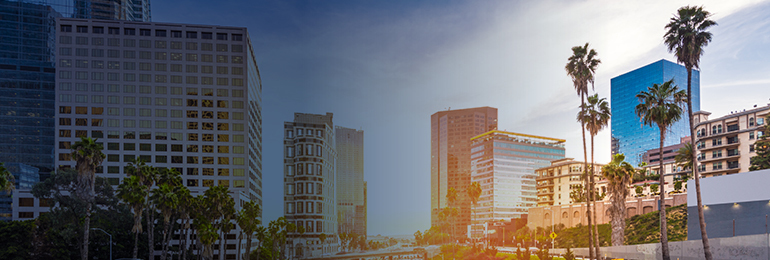News & Insights
Legal Alert

Boston Biotech: The Race for New Facilities
Real Estate
1.10.22
Boston has been the undisputed center of the biotech industry for years, and the growth doesn’t appear to be slowing. Allen Matkins partner Martin Togni recently moderated a panel event in Boston to discuss the race for new facilities in the area. The panelists were Douglass Cuff, SVP of Real Estate at IQHQ; Rob Dickey, Executive Vice President at Leggat McCall; Steven Kelly, CEO at Timberline Construction; and John Sullivan, Partner and Director of Architecture at SGA.
The discussion started with a summarization of the current market, which they traced back to the 1980s when the state government took steps to attract bioscience firms to Massachusetts. As these firms entered the market, they clustered in Cambridge and Kendall Square, where they had access to talent from local universities. The area remains a hotspot for biotech, with 175 life science companies forming in Massachusetts each year for the last three years. However, a record real estate market, combined with that continued business growth, has led to an imbalance between supply and demand that has benefited property owners over tenants.
Biotech Trends: Moving to the Greater Boston Area
Cambridge remains a coveted location, but the price point in the area makes it prohibitive for all but companies with the deepest pockets to set up shop. As a result, biotech firms have turned their attention toward clusters in the greater Boston market, including areas like Andover, Somerville, Waltham, and Watertown. This isn’t necessarily a bad thing, and it’s created some interesting opportunities for developers who understand the needs of biotech firms.
Depending on the nature of the work, the available buildings in the urban core may not be a good fit. For example, a company focusing on research and development may be able to use older, established buildings. On the other hand, a company that needs room for manufacturing also needs a different type of building that’s only available outside the city.
Life sciences companies typically prefer locations near other life sciences companies, though. Developers can address this need by developing clusters to attract a blend of tenants at different stages in their companies’ life cycles. They also have to consider the type of science used in the tenant’s work so they can target marketing efforts. For example, companies in the research and development stage tend to recruit an urban workforce. But by the time they move into manufacturing, they’re drawing on a workforce outside the urban core.
Hot Markets for Biotech
When choosing locations, biotech companies prefer spaces where they have room to grow as the business evolves. Like most companies, these companies aren’t static. They expect massive growth, and they expect it to happen quickly. They need sites where they don’t have to wait years for modifications to meet their current needs. Nor do they want to move just because they outgrew the site.
Somerville’s Boynton Yards is one example of what makes the greater Boston area appealing. The site offers proximity to Kendall, and the town has a high concentration of people with PhDs. It’s also on top of a new subway station. Even more important, it’s a master-planned campus designed to integrate with the community ecosystem and be a place where people want to come to work.
Like Somerville, Fenway offers access to transit via a new commuter rail stop. It also has unique offerings to attract users to the space, including views of Fenway Park. The success of these developments underscores the importance of building high-quality space that gives tenants features and amenities they can’t find elsewhere and maybe didn’t realize they wanted.
How Developers are Addressing Rising Construction Costs and Supply Chain Disruptions
It’s impossible for developers to ignore the effects of rising construction costs and supply chain disruptions on their deals. The price of steel and lumber skyrocketed during the pandemic, but those figures have since started to decline. As manufacturing revamps—steel production is now back to pre-pandemic levels—supply should catch up with demand, and prices should go down. This could happen as early as the first quarter of 2022.
The supply chain has presented additional problems, as the typical 35-day cycle for receiving materials from China has expanded to 78 days, and commodities availability remains volatile. Everyone in the construction industry has learned how to adapt. Challenges include identifying lead time, engaging subcontractors early in the process so they have time to get into the manufacturer’s pipeline, and working out of sequence.
The Future of the Market is Still Bright
Despite the current challenges, the panelists remain optimistic—and cautious. Boston is still the life sciences capital of the world, with 35 million square feet of life sciences space and 45 million square feet of space in the pipeline. However, the panelists also recognize the cyclical nature of the real estate market and note that we will go through a down cycle at some point in the future. Projects rooted in good design aimed at the needs of the life sciences market should be successful even when a downturn occurs.
Author
Partner
Allen Matkins Leck Gamble Mallory & Natsis LLP. All Rights Reserved.
This publication is made available by Allen Matkins Leck Gamble Mallory & Natsis LLP for educational purposes only to convey general information and a general understanding of the law, not to provide specific legal advice. By using this website you acknowledge there is no attorney client relationship between you and Allen Matkins Leck Gamble Mallory & Natsis LLP. This publication should not be used as a substitute for competent legal advice from a licensed professional attorney applied to your circumstances. Attorney advertising. Prior results do not guarantee a similar outcome. Full Disclaimer




